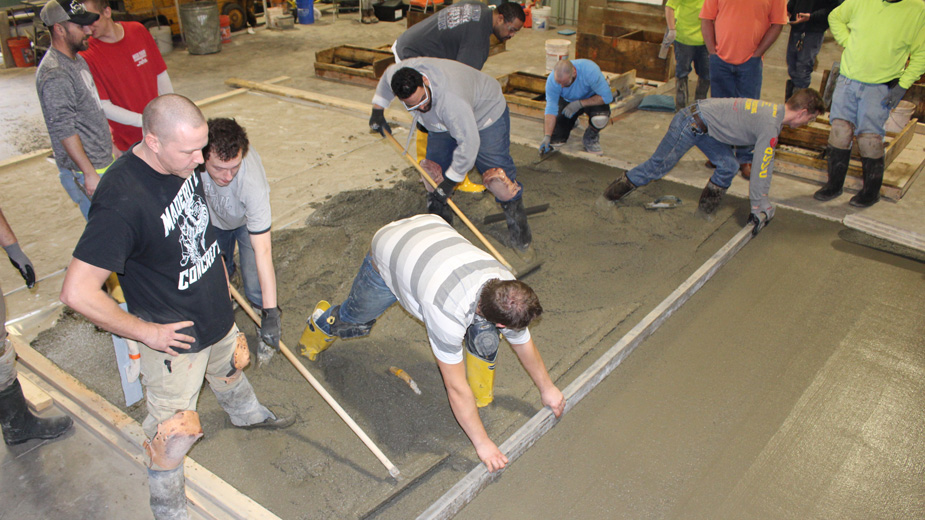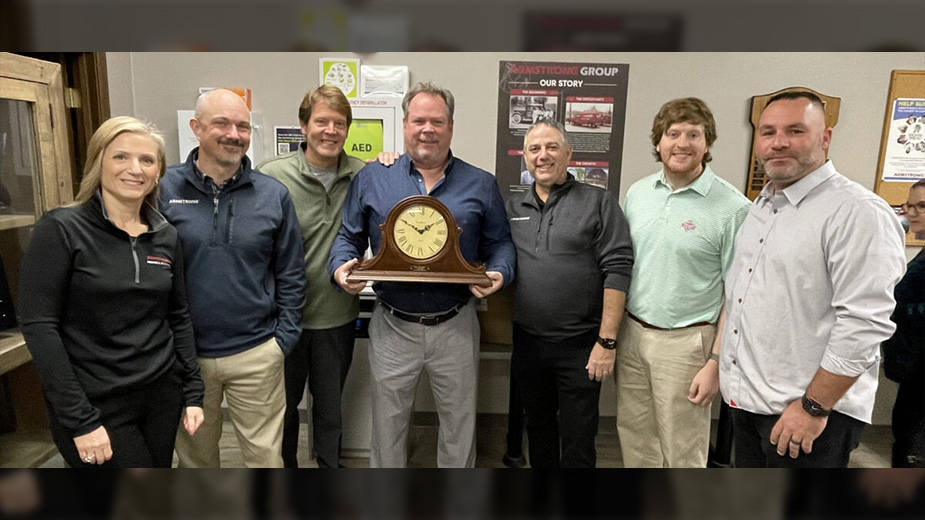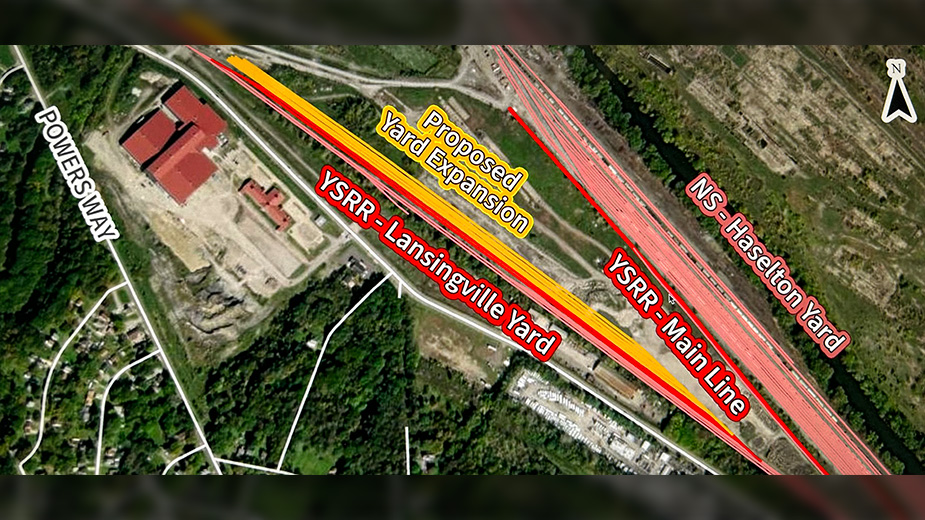Apprenticeships Cement Career Paths for Masons
By Peter H. Milliken
YOUNGSTOWN, Ohio – Hard physical labor and a demanding learning experience are paving the way to new and financially rewarding careers for apprentice cement masons.
Thomas Krashoff, 32, and Brandon Banks-Hall, 28, are in the first year of their three-year apprenticeships during which they’ll be paid for their on-the-job training. Both are working so they can earn more than they did in their earlier jobs.
“I have four kids, so I want to make sure they have a good life,” says Krashoff, a Youngstown resident who worked 10 years as a cook and three as a landscaper. “I’ll probably make triple what I made in the restaurant at max, probably double what I made landscaping.”
After completing the apprenticeship, cement masons earn $30 per hour and another $17 in benefits. Wages and a pension prompted Krashoff to enter the apprenticeship, as did the long-term job prospects.
“It’s something that’s always going to be there. Concrete is what everything’s built with for the most part,” he says. “A hundred years from now, something I built will be there.”
Adds Banks-Hall of Sharon, Pa., “I’ve worked in a few different industries, from trucking to retail to food service. This is what I like right here, where you get the trade and you get the skills to pay the bills.”
Success as a cement mason takes patience, hard work, finesse, “knowledge and experience, first and foremost, and a great team,” they say.
A recent training session at the Structural Ironworkers’ Local 207 hall on Bev Road found them finishing cement with 12 other apprentices who range in age from 20 to 40. Local 526 of the Operative Plasterers and Cement Masons’ International Association offers the program
“We’re trying to teach them a skilled trade so that they have a career,” says program instructor Jesse Clay. “We give them the tools that they need to go and make money for a family.”
The work can be difficult and dirty, Clay notes. Cement masons work outdoors in all kinds of weather, including extreme heat and humidity.
“When the news says, ‘Don’t go outside for more than 20 minutes,’ that’s when we’re going out and working 10 or 12 hours,” he says.
Apprentices pay no tuition and incur no student loan debt, says the local’s business agent, Robert Gerst.
This year, 12 of 24 applicants were admitted to the program. In addition to paid on-the-job training, apprentices undergo four weeks of unpaid classroom training annually, including pouring and finishing.
“When they’re done, we give them a true understanding of everything about concrete,” Gerst says.
The apprenticeship program is sponsored jointly by labor unions and the Builders’ Association of Eastern Ohio and Western Pennsylvania, with which the building trades negotiate their contracts.
The association represents about 150 construction contractors in Trumbull, Mahoning and Columbiana counties in Ohio and Lawrence and Mercer counties in Pennsylvania.
Apprenticeship program costs, including instructor compensation, are paid for by an allowance specified in the labor contracts.
In the cement masons’ case, that allowance is 25 cents per hour worked by the journeymen in that union.
Apprenticeships run three to five years, depending on the trade, and apprentices incur little to no out-of-pocket costs.
Apprentices must be at least 18 years old, hold a high school diploma or the equivalent and pass a drug test to be admitted. Drug tests continue throughout their careers.
“Once you get that training, you have a skill set that cannot be taken away from you and that is transferable anywhere in the country,” says Kevin Reilly, executive vice president of The Builders, based in Vienna Township.
Opportunities also exist for advancement into supervisor or ownership roles, Reilly notes.
Projected employment growth in the building trades by 2026 is generally faster than the 7% average growth for all occupations, reports the U.S. Department of Labor. Projected growth rates are 16% for plumbers and pipefitters, 13% for ironworkers, 12% each for masonry workers, construction equipment operators and laborers, and 11% each for roofers and glaziers.
Other projected growth rates are 9% for boilermakers, electricians and sheet metal workers, 8% for carpenters, 6% for painters and 5% for insulation workers.
“The last two summers, there have been a lot of days where I was 10 to 15 guys short and couldn’t fill orders for contractors who called,” Gerst says. “We have guys in the hall that make $70,000 or $80,000 a year with full benefits. We have guys that make $10,000 or $15,000 a year.
“It’s what you make of it. If a guy is a self-starter, a motivated person and a hard worker, the sky is the limit,” he says.
“We are a referral hall. … We don’t dictate to the contractor who they’re going to employ.”
A major contributor to the availability of construction work would be passage of a massive infrastructure improvement bill. “If there’s an infrastructure plan that’s approved, the outlook is even greater than what it would normally be,” Reilly says.
Motorists don’t necessarily see structural deficiencies under bridge decks, but the road surface maintenance needs are highly visible, Reilly observes, calling infrastructure maintenance and upgrades “crucial.”
“When you’re driving down the road and hitting potholes, you know that work needs done on the roads.”
Pictured: Jesse Clay instructs apprentices as they work on the wet cement. The apprenticeship program is jointly sponsored by the Cement Masons’ union and The Builders Association.
Copyright 2024 The Business Journal, Youngstown, Ohio.



